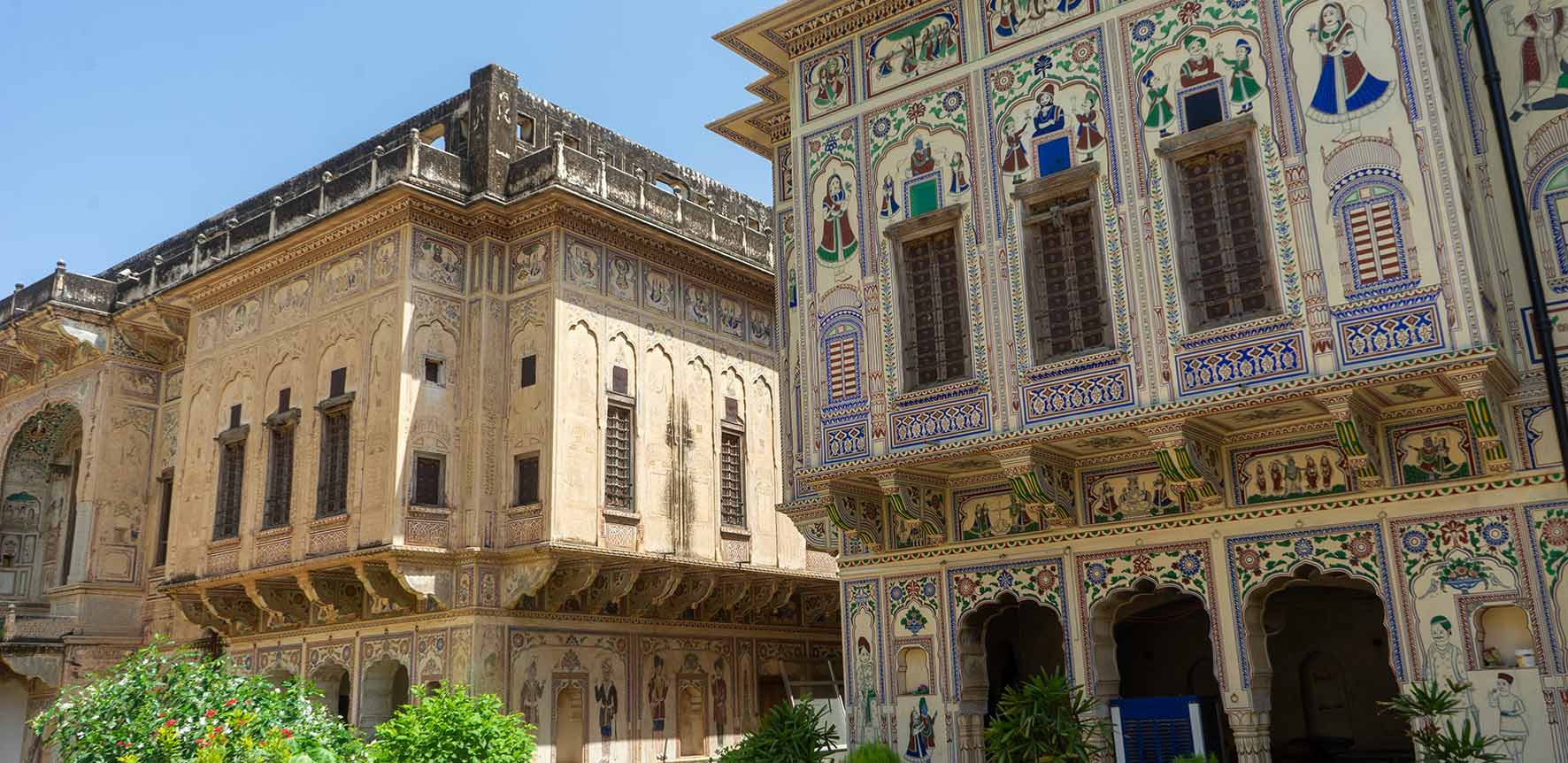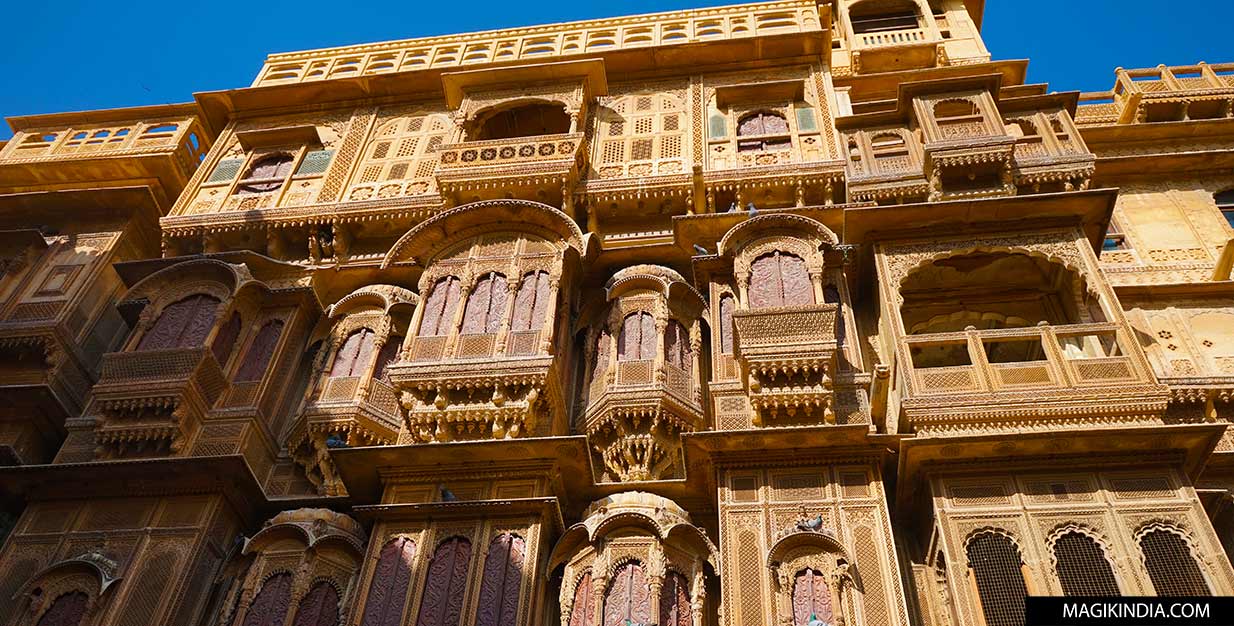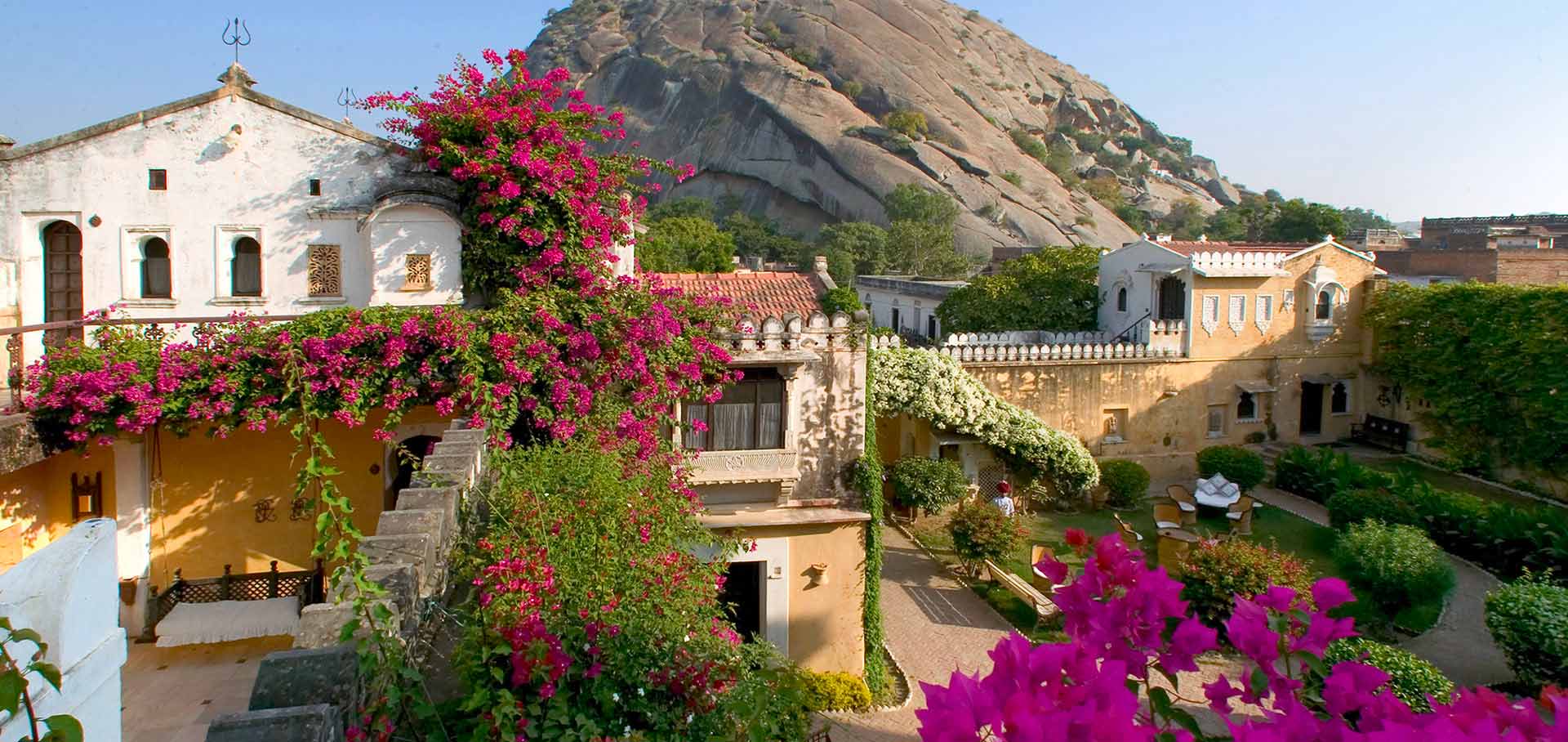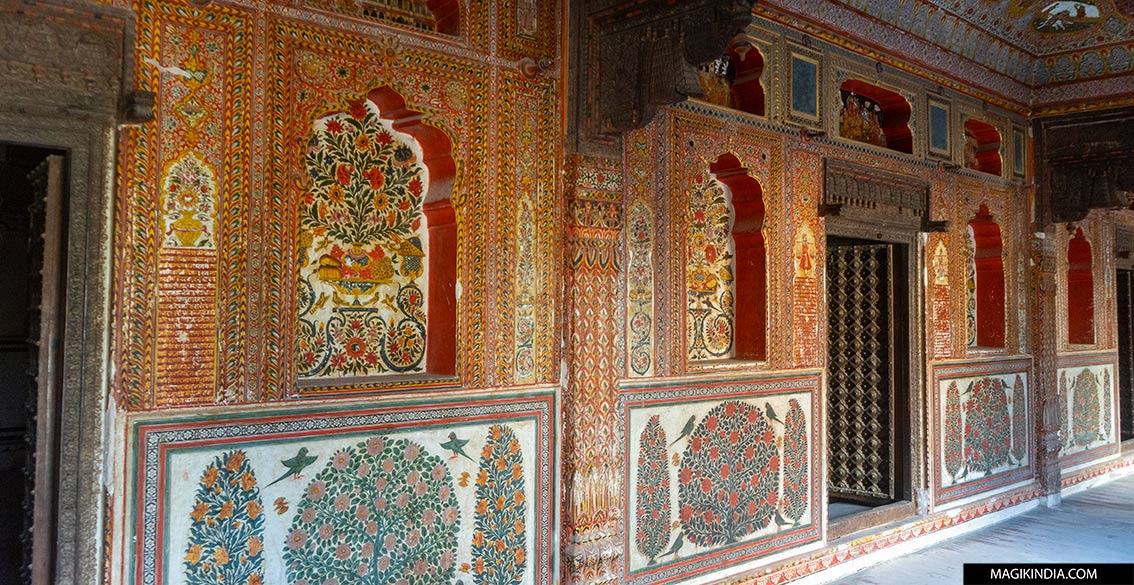
Mahansar, the peaceful jewel of Shekhawati
Far from the relative bustle of more well-known towns like Mandawa or Nawalgarh, the village of Mahansar offers a peaceful respite. It is in the tranquility of its narrow streets that one of Shekhawati’s gems is revealed: the “Sone Chandi Ki Dukan,” an old shop housing dazzling frescoes, enhanced with genuine gold and silver leaf. Mahansar is a unique opportunity to discover the opulent art of Marwari merchants in a preserved atmosphere.
History and foundation of Mahansar
Mahansar, located in the Jhunjhunu district, flourished in the 19th century as an important trading center. Its position on the ancient caravan routes linking Delhi and Jaipur allowed merchant families to establish lucrative businesses there, particularly in cotton and opium. This accumulated wealth was reflected in the construction of imposing mansions, vying with one another in opulence and artistic expression.
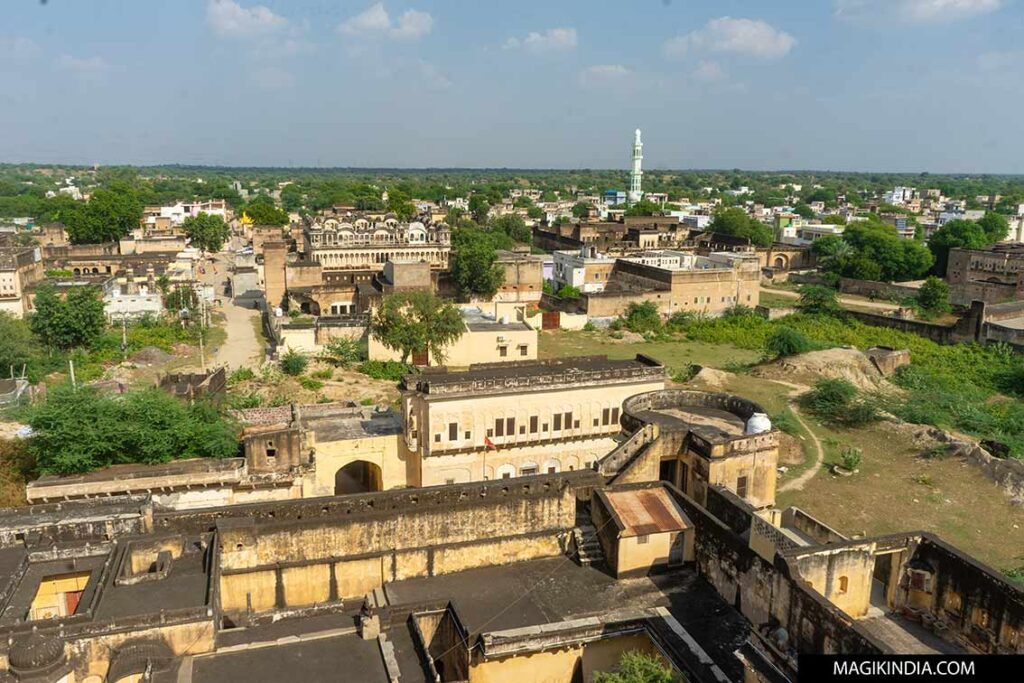
Founded in 1768 by Thakur Nahar Singh, second son of Thakur Nawal Singh of Nawalgarh, the village of Mahansar became the capital of one of the illustrious branches of the Shekhawat family. It was not merely a lord’s seat; Mahansar became a major administrative and military center in the region. The Thakur lineage left a lasting mark there, playing a pivotal role in preserving tradition and heritage, a legacy magnificently embodied by the imposing fort that dominates the landscape.
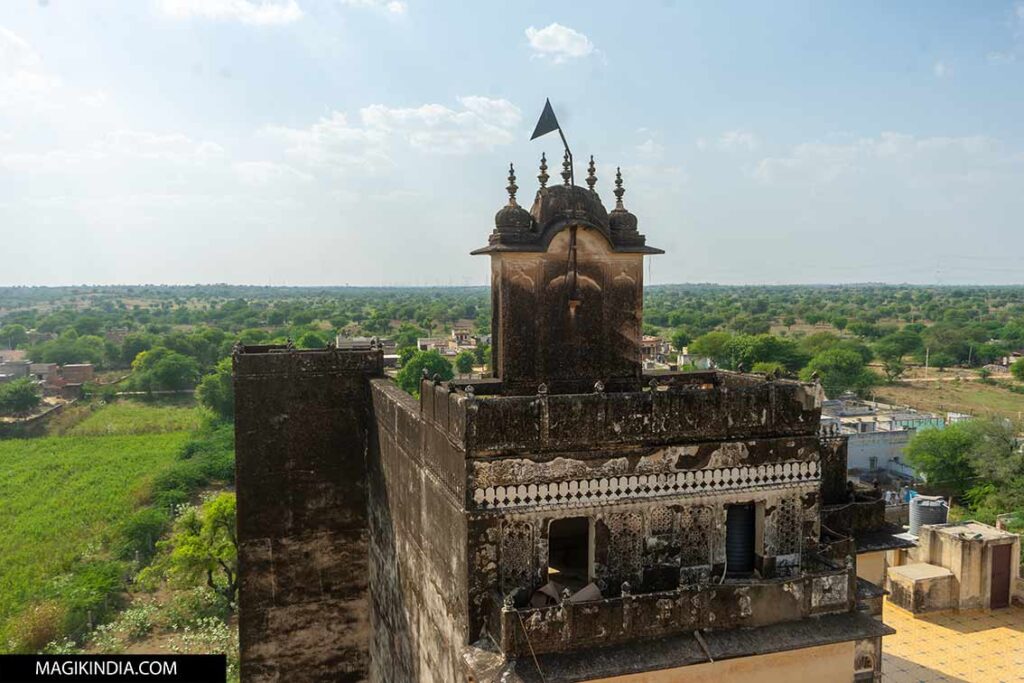
The star attraction, the “Sone Chandi Ki Dukan”
Mahansar’s most famous architectural treasure is undoubtedly the “Sone Chandi Ki Dukan”, literally, the “gold and silver shop”.
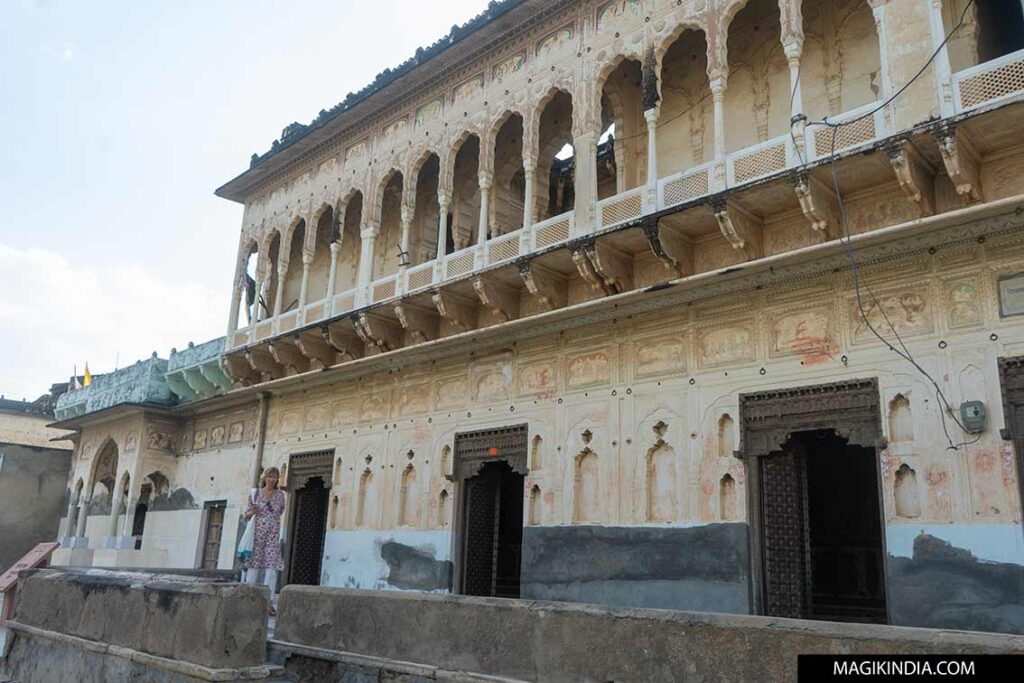
Dating from the mid-17th century, this haveli is not impressive for its exterior, but for the splendor of its vestibule. The small room is a veritable artistic sanctuary, its walls entirely covered with exquisitely detailed religious and mythological frescoes.
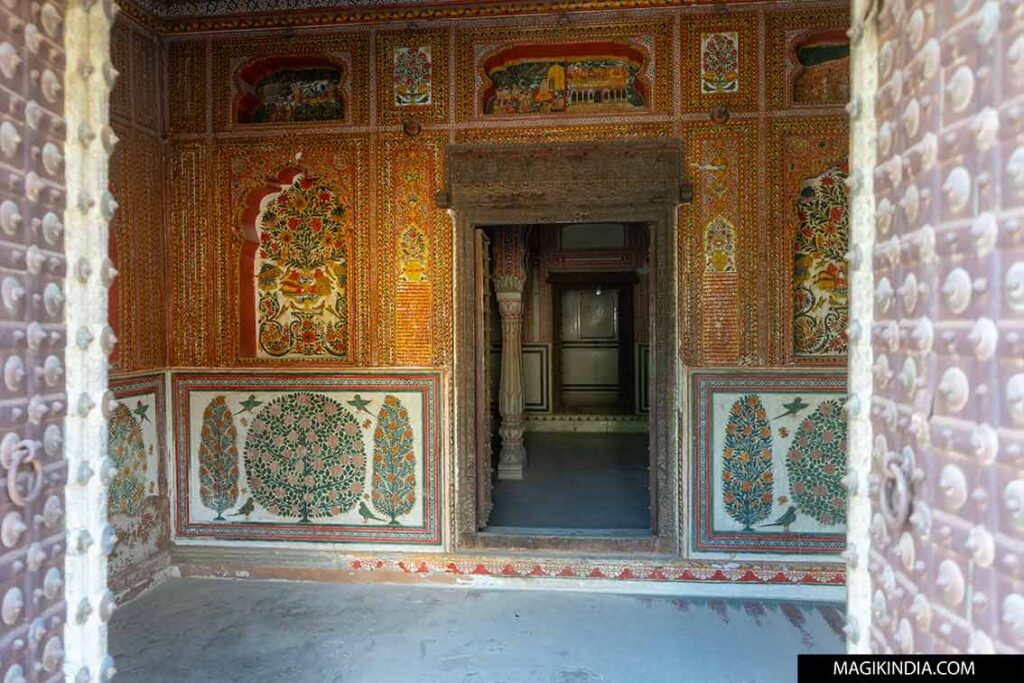

The house’s name comes from the technique used by the artists. The paintings incorporate gold and silver leaf, as well as fragments of semi-precious stones, giving them a unique brilliance and depth. The scenes often depict episodes from the Ramayana, the Mahabharata, and local legends.
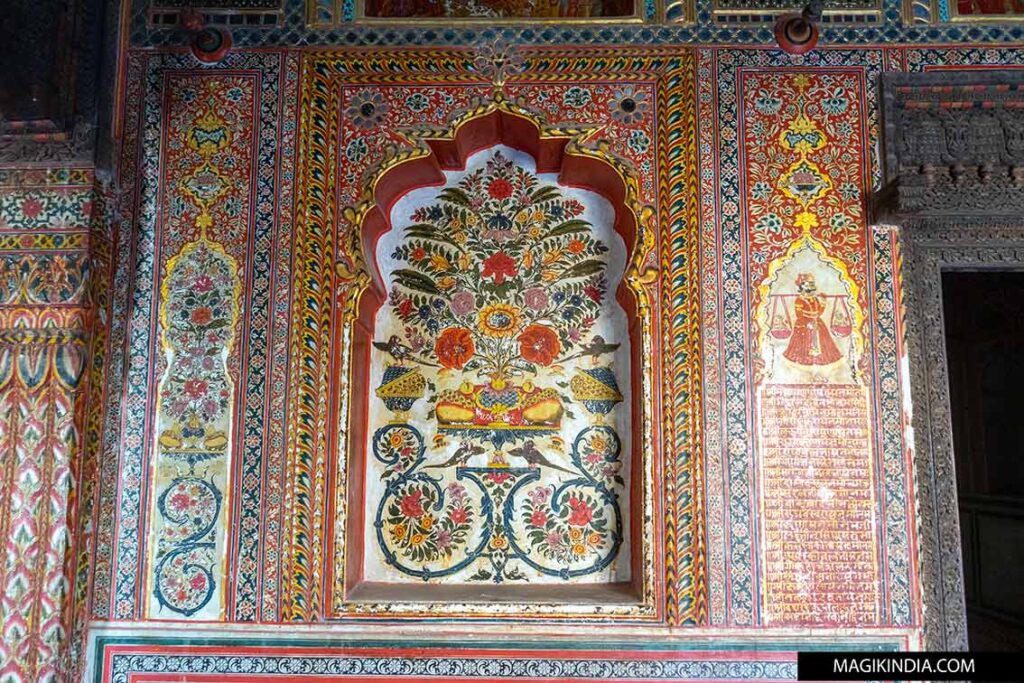
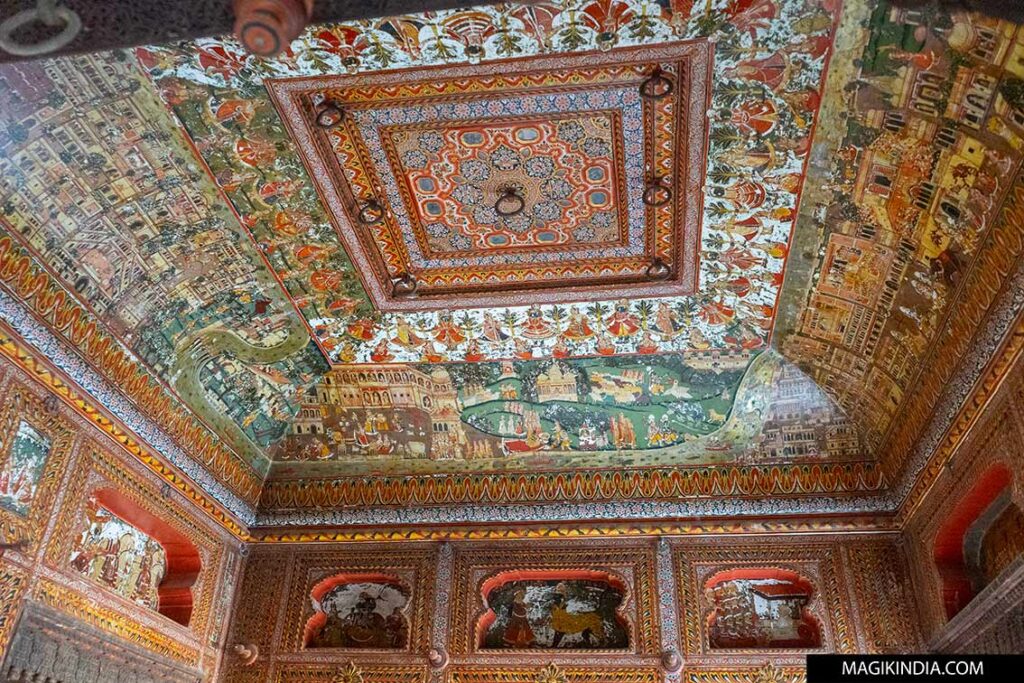
Marwari merchants used to use this room as a general trading post, exchanging essential goods such as rice, wheat or “dal” (legumes).
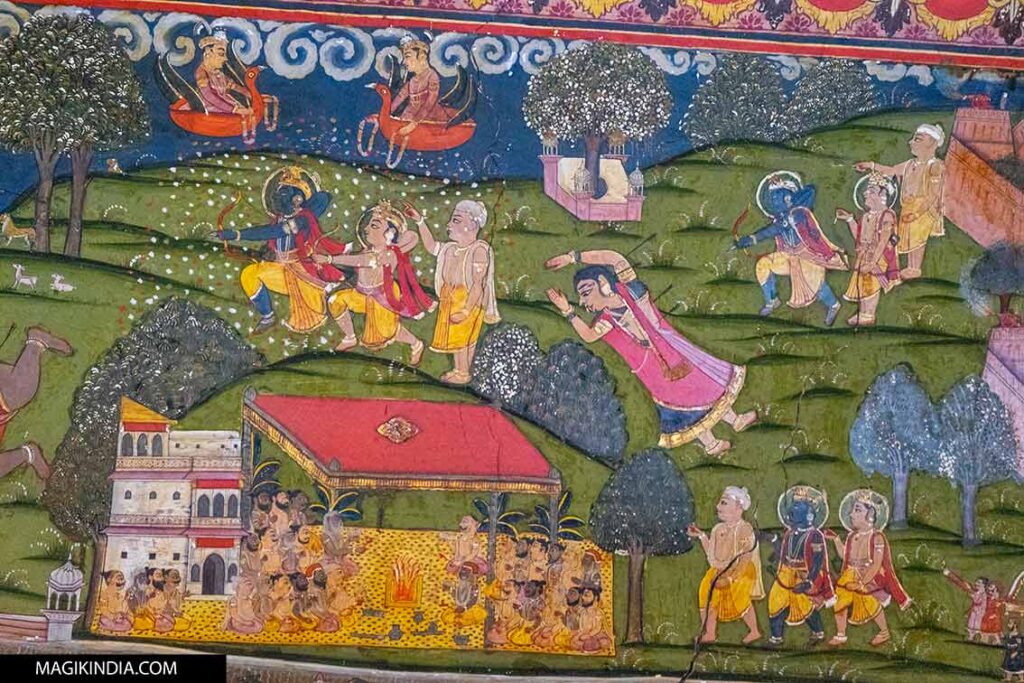
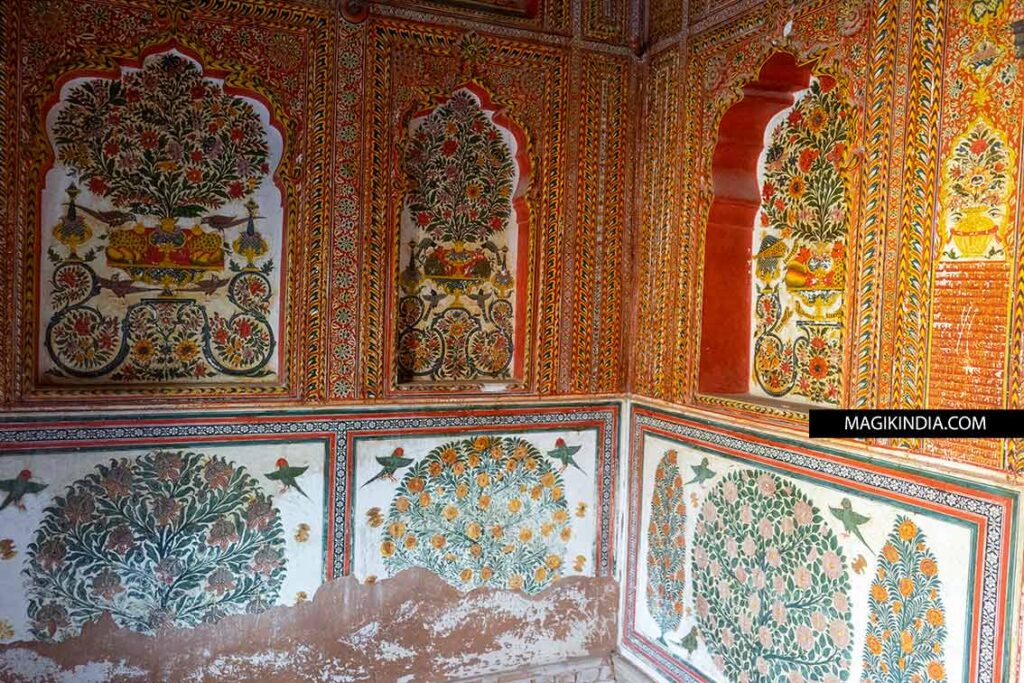
Mahansar Fort
A true historical sentinel of Shekhawati, the fort of Mahansar was erected in 1768 by Thakur Nahar Singh, the second son of Thakur Nawal Singh of Nawalgarh and founder of the Mahansar thikana (fief).
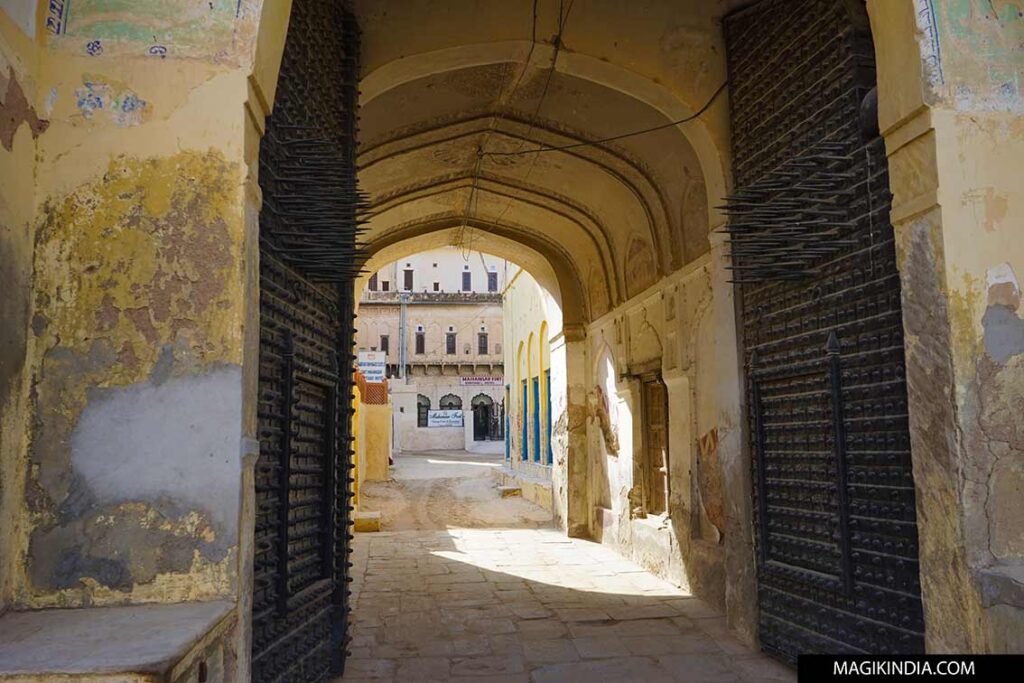
Designed as a military guard post and crucial administrative headquarters, the fort was strategically fortified. It was renowned for its robustness, surrounded by deep ditches and equipped with thirty bastions, offering maximum security in a conflict-ridden region.
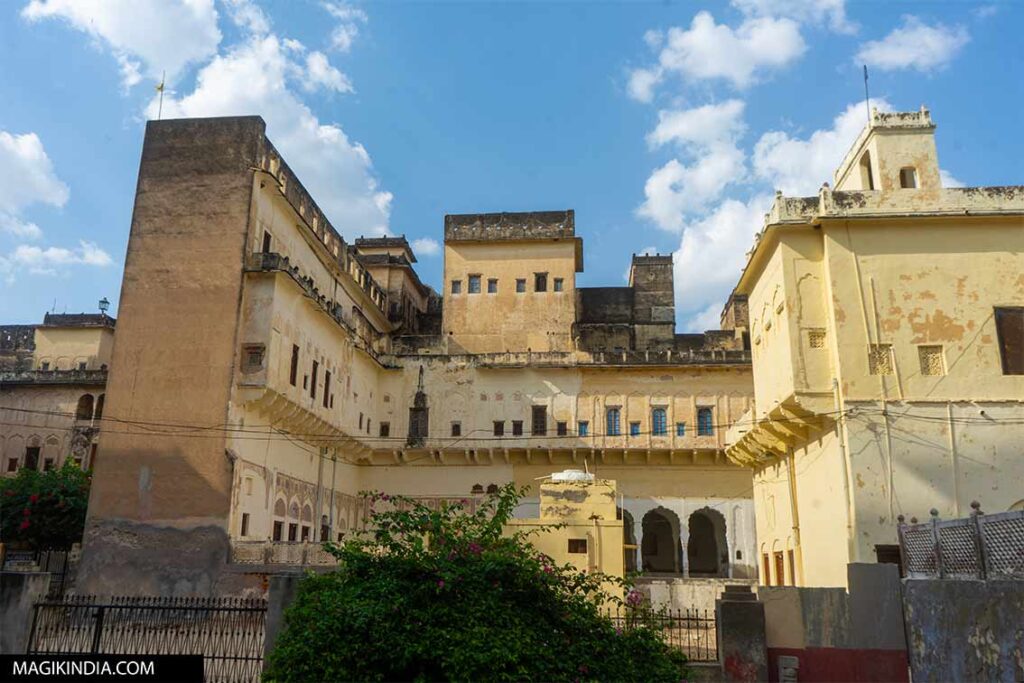
The complex also includes two ancient temples and a “kua,” a distinct well in the region with four Persian-style turrets. Like many structures in the Shekhawati region, murals decorated some interior spaces, although the fort was more focused on its military function than the havelis.
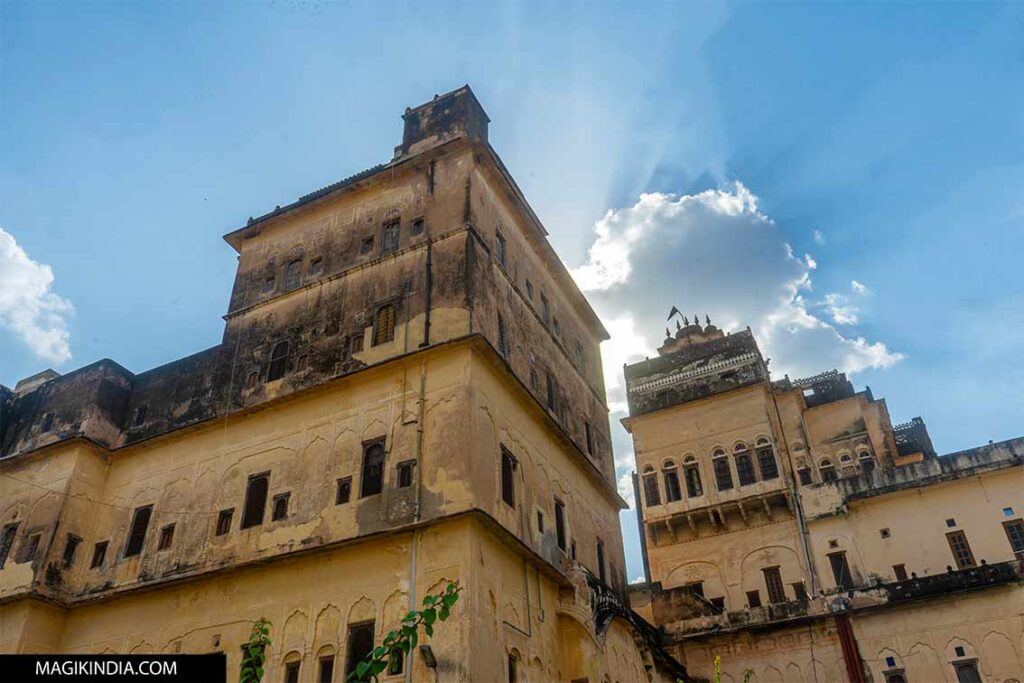
Following the death of Thakur Shivnath Singh Ji, the fort and the entire domain were divided among his three sons, giving rise to the distinct entities of “Bada Panna,” “Bichla Panna,” and “Chhota Panna.” This division marked the uniqueness of Mahansar’s thikana, characterized by a system of joint governance that deviated from the custom of a single monarch. This distinctive feature even extended to its emblem, the panchranga (five-colored flag), attesting to its independent status. Today, this historical division remains visible through the three distinct houses.
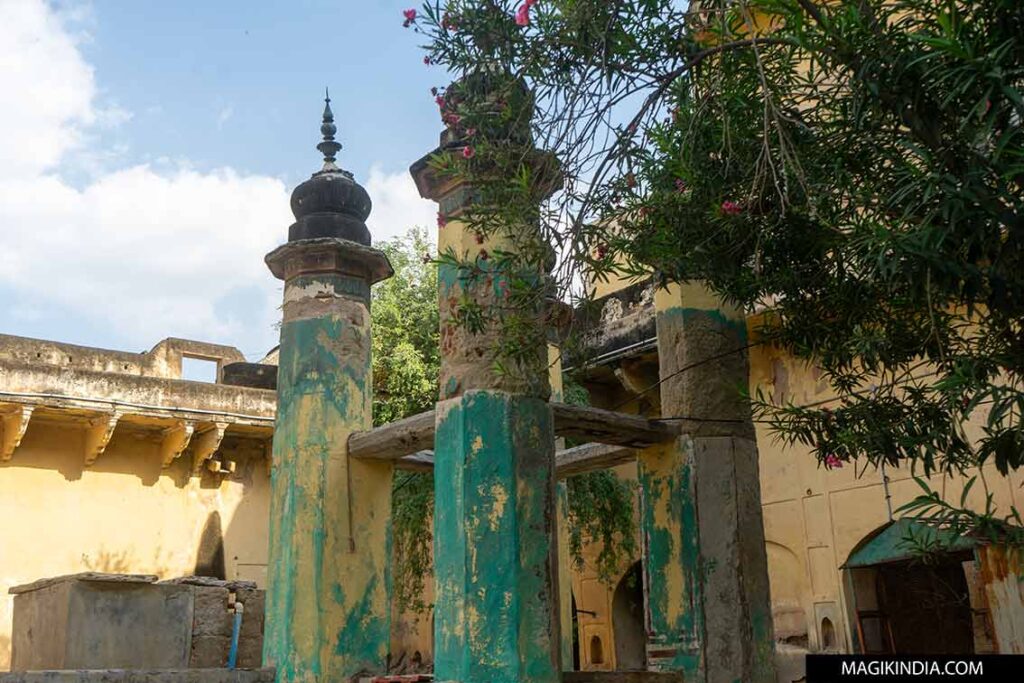
Today, Mahansar Fort has found a second life by embracing tourism. Part of the fort (the Bada Panna) has been restored and transformed into a heritage hotel known as Narain Niwas Castle.

Managed by descendants of the founding family, this hotel allows visitors to stay within historic walls, experience the royal ambiance of the former princely state, and appreciate the culture and traditions of Shekhawati in a setting deliberately left in its original state.

Also worth seeing opposite the fort is the Raghunath Temple. This 19th-century temple is another major point of interest. It is often mistaken for a haveli due to its civil architecture and is visited by many devotees throughout the year.
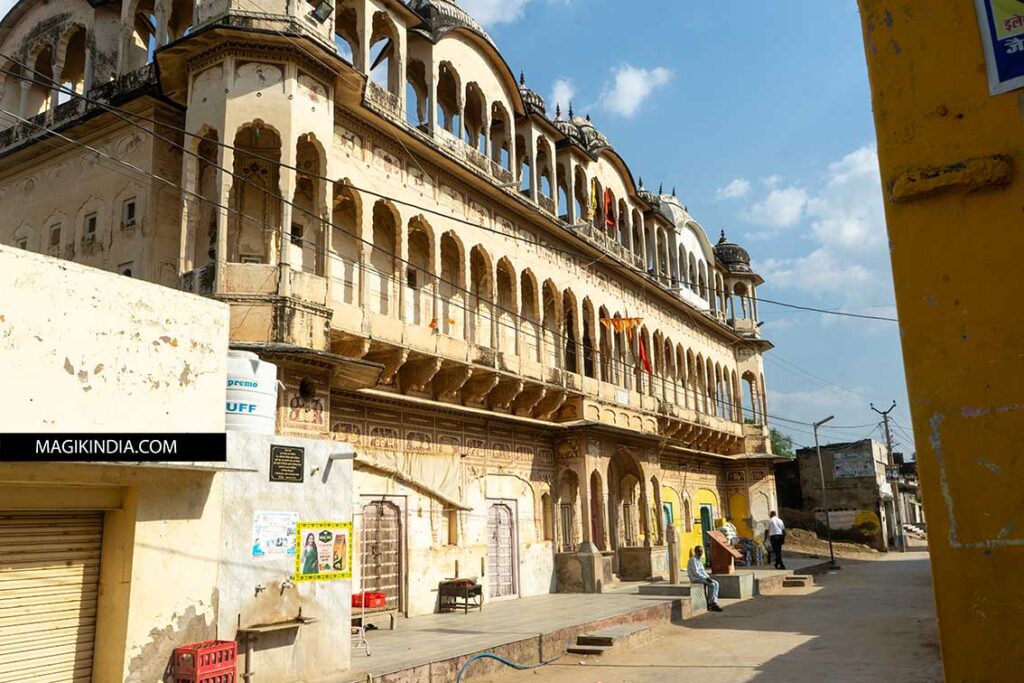
“Rajwadi Daru”, the royal elixir
Mahansar also derives its fame from its “Rajwadi Daru”, literally “the alcohol of kings”, whose prestigious history has its roots in the 18th century in the Shekhawati region.
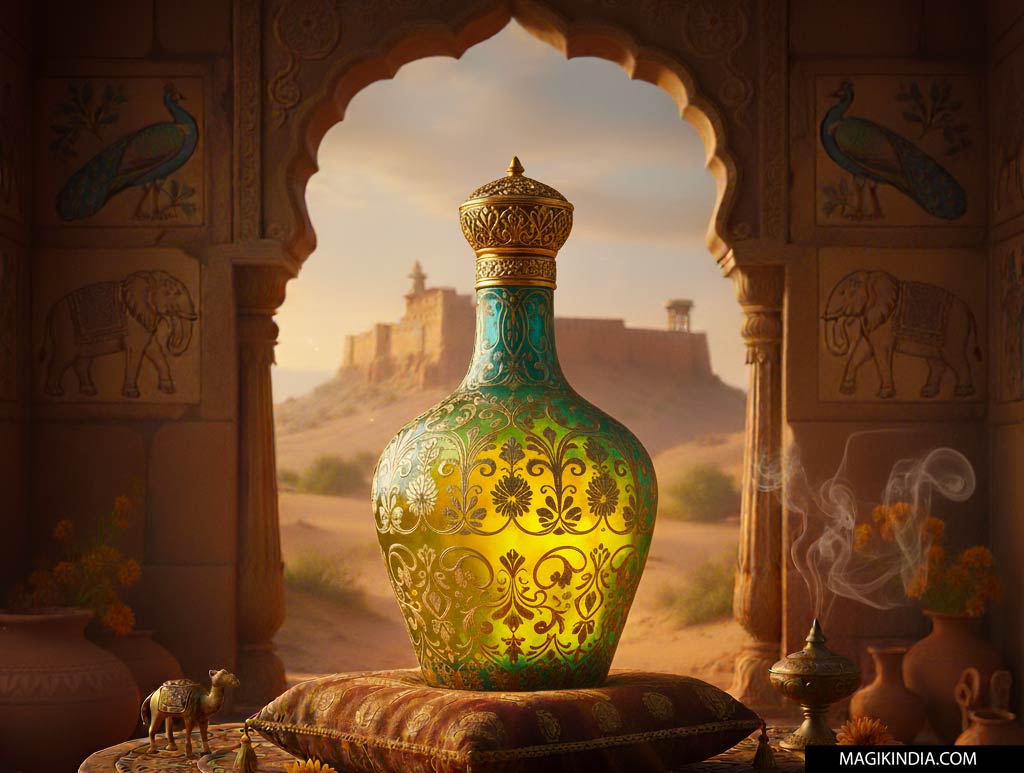
It is said that the secret formula for this elixir, originally intended solely for royal consumption, was developed by Ayurvedic physicians and alchemists of the fiefdom. The liqueur was also believed to possess medicinal properties. Produced from fermented grains and distilled in copper stills, this drink of kings was subtly infused with a rich blend of flowers, fruits, and spices, including cardamom and fennel.
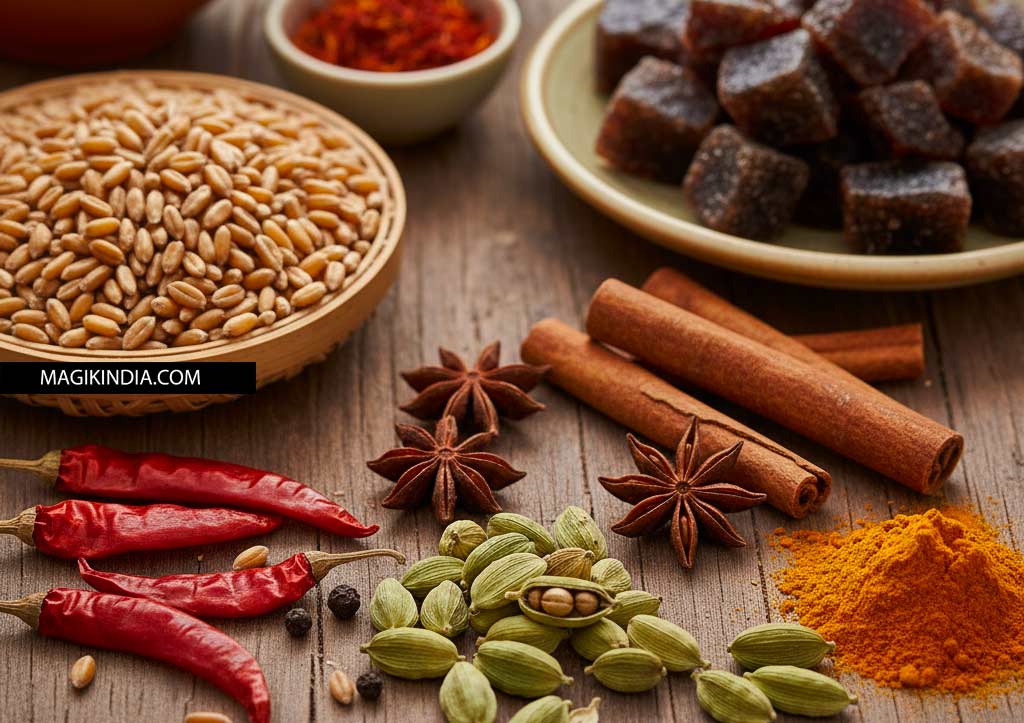
Once very popular with the elite, the “Rajwadi Daru” even travelled to distant courts, transported on camelback.
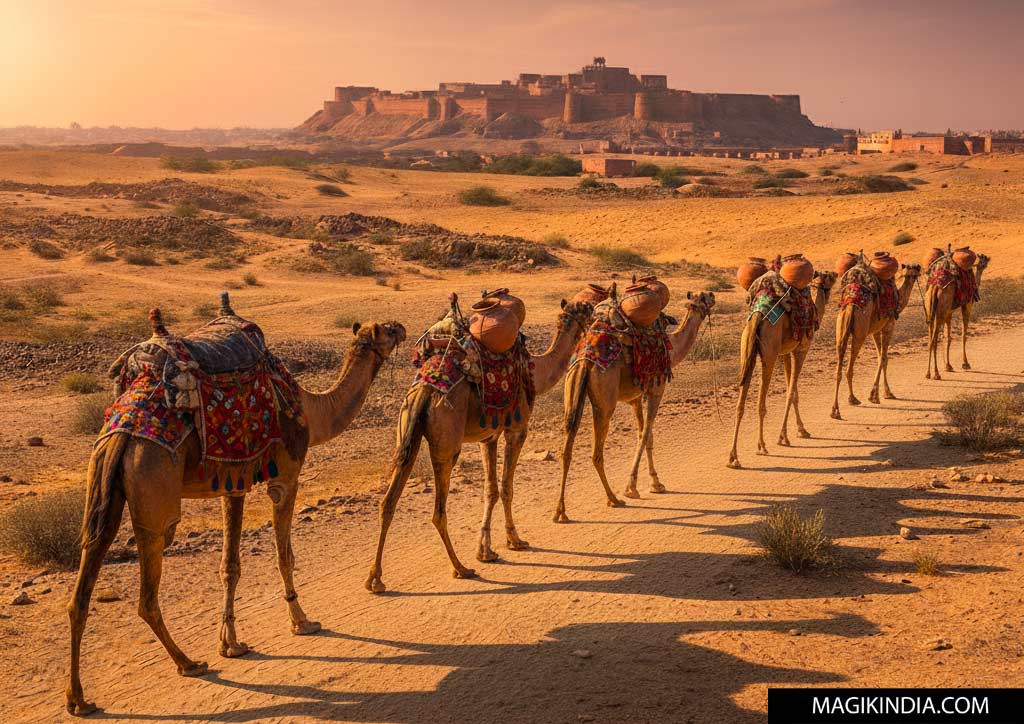
Around 1890, during the British Raj, commercial production began. However, after India’s independence, a ban was imposed on these heritage liquors, halting production for many decades. Today, Rajendra Singh Shekhawat, an eighth-generation descendant, is reviving this tradition. He has developed the drink under the brand name “Maharani Mahansar”.
to visit in the surrounding area
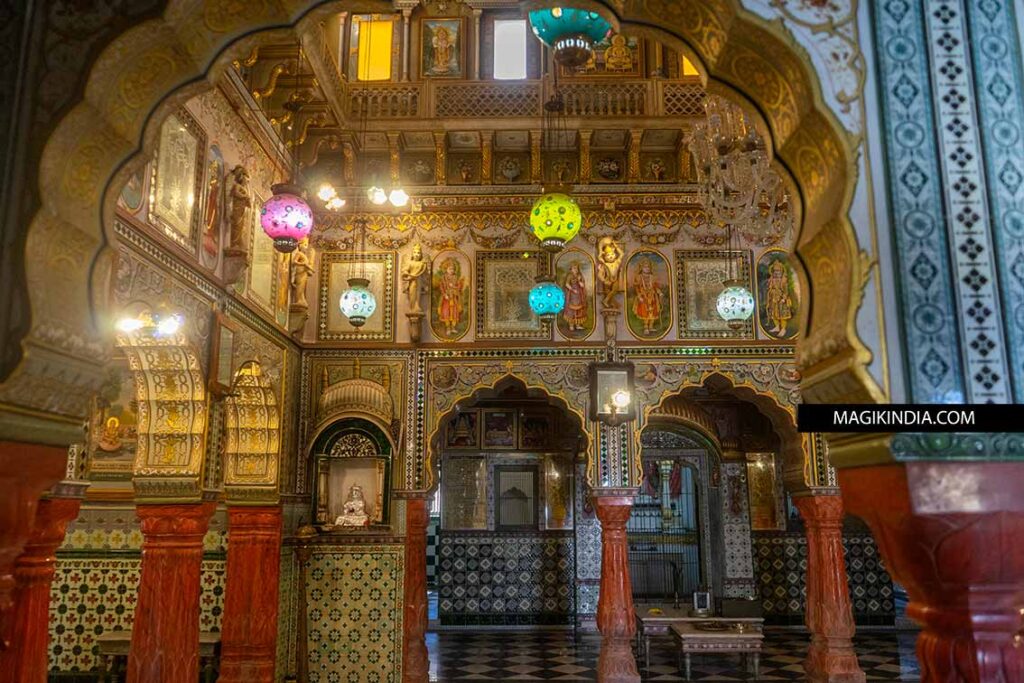
The city of Churu, often considered the gateway to the Thar Desert, offers an immersion into the rich heritage of the Shekhawati region. The main attraction is the Jain temple built in the style of a small Rajput palace. Exploring Malji Ka Kamra, another grand historical mansion, provides further insight into the acumen of the merchants of that era. In contrast to this grandeur, the city also boasts serene spots such as Sethani Ka Johara, a large stepwell historically built by a wealthy widow; this site is ideal at the end of the day for birdwatching and sunset viewing.
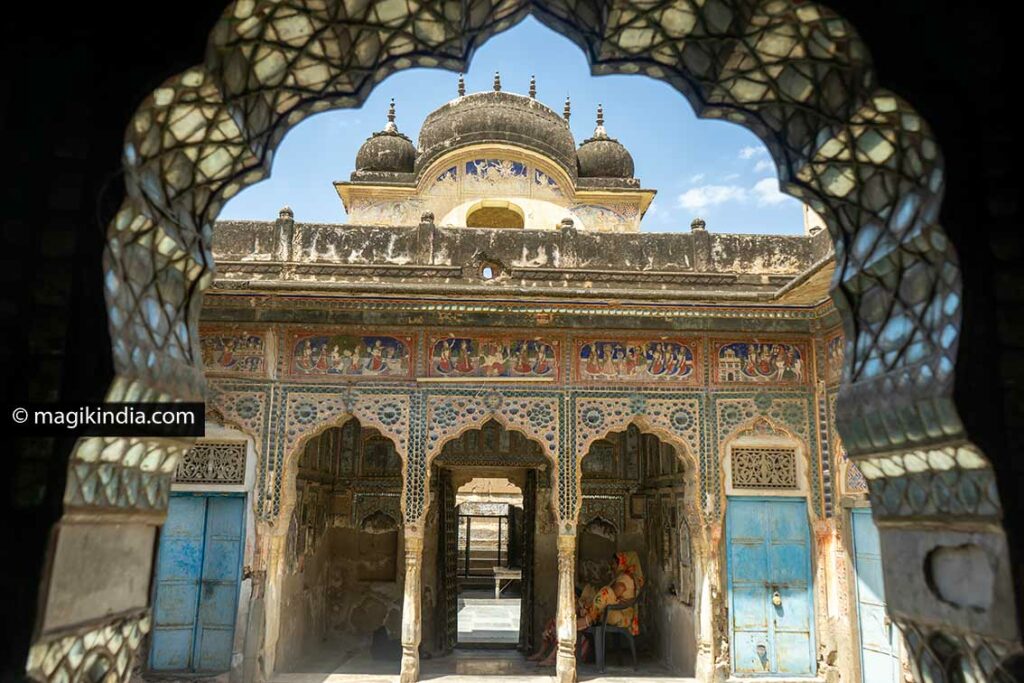
Ramgarh, also known as “Ramgarh Sethan,” is a historic city founded in the 19th century by wealthy merchant families who wished to build a more opulent metropolis. Once dubbed the “second Varanasi” for its learning, it is now famous for its high concentration of richly painted havelis and chhatris, testaments to its former glory. Perhaps the most striking attraction is the Khemka Shani Temple. This temple, dedicated to Shani Dev (the deity associated with the planet Saturn), is entirely covered with thousands of inlaid mirrors. This shimmering decoration creates a magical “treasure box” effect, making this small temple a true architectural gem of Shekhawati.
Tips for the visit
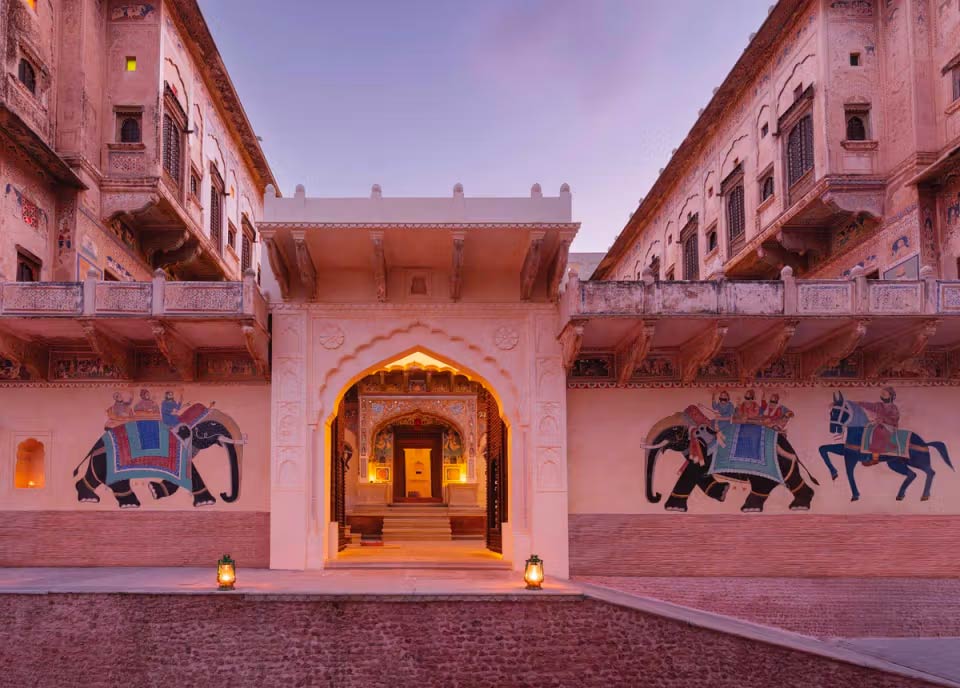
- Best time to visit: The ideal season is from October to March, when the weather is pleasant. Summers (April to June) are extremely hot.
- Access: The village is generally accessible by road from major Rajasthani cities (Jaipur, Bikaner) or from neighboring towns in Shekhawati.
- The Sone Chandi Ki Dukan: You will need to request the key to the building from the family who cares for it.
- Hotels: You can stay within Mahansar Fort or choose from the many hotels in Mandawa. Our favorite, the 4-star “GULAB HAVELI,” is a historic 19th-century mansion, formerly known as Gulab Rai Ladia Haveli. The hotel combines traditional Rajasthani charm with modern refinement. It was meticulously restored over eight years to preserve its historic character. A must-see in the Shekhawati region!
Visit the Shekhawati region with us!




